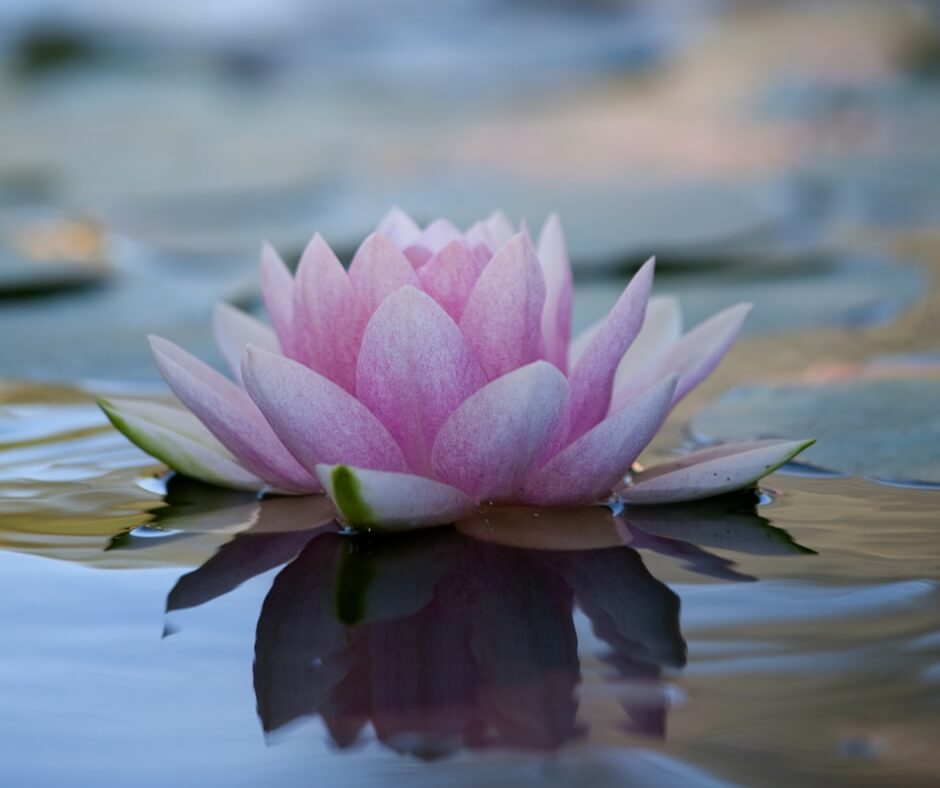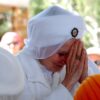The Big Sleep
My father committed suicide in 1942. I was 13. I blotted out thoughts about death for many years. In my mind, death was just a permanent dreamless sleep. I had never attended a funeral until I went to a memorial service for Peter the Hermit, a well-known metaphysical teacher who had lived in the Hollywood Hills until 1969.
“Everyone wants to go to heaven, but nobody wants to die.” That was a favorite quote back in the early days of 3HO. Surprisingly, some of the most inspiring, uplifting, and amazing experiences I have had in my adult life were when I was in the presence of death.
Early in the ‘70’s an infant in our community died of SIDS. I was at the mortuary with the father and one of our Sikh ministers who was going to prepare the body for cremation according to Sikh tradition. I was not thrilled being in a funeral parlor and certainly had no intention of participating in the Sikh rite of bathing the body in yogurt before cremation. Yet as the minister was reciting Japji Sahib and beginning to apply the yogurt to the tiny body (we had brought a small tub for the purpose) I could see another pair of hands was needed.
To my amazement, as I grasped one tiny baby leg to lend support, I felt as if I were holding a rubber doll, and even more amazing, as I touched this dead body, literally a corpse, I felt the outer corners of my mouth involuntarily curling up into a blissful smile. I experienced a sense of total tranquility, peace, and joy. God was surely close to Earth that day, collecting the innocent soul who had been called Home.
The Power of Akaal
When my son died suddenly of a heart attack in 1998, at the age of 49, I discovered the incredible blessing of being part of this 3HO family. Members of the community rallied around and virtually cushioned me through all the preparations. Knowing death to be a journey home, I had ordered “Bon Voyage” balloons for the funeral. I knew it had to be a celebration. James was finally free of the heavy karma of this incarnation. As the casket was about to be consigned to the flames of the crematorium, about 50 of us chanted Akaal, Akaal, Akaal, over and over, led by Yogi Bhajan whose voice resonated with such power and passion, it was as if there were thousands and thousands of beings chanting with us, joining in and echoing the call to deathlessness.
The chanting of Akaal creates a vibratory frequency that assists the departing soul (carried in the subtle body) on its journey through the ethers to final liberation. It was an exhilarating, uplifting experience. I didn’t realize I was, of course, in shock for several weeks, and then unexpectedly I went through the textbook stages of mourning.
When my mother died at the age of 94, it was a great consolation for me to be able to stand next to her hospital bed chanting Akaal with four dear ladies of our community. As I looked at her lifeless body, I knew for sure, my mother wasn’t there; it was just an empty shell.

Yogis and Mourning
Dale Sklar was only 15 when we met him. He fell in love with the Sikh scriptures, the Siri Guru Granth Sahib, and taught many of us how to read Gurmukhi. Appointed the first Bhai Sahib (minister) of Sikh Dharma, Dale became Dayal Singh. He set a constant example of humility and devotion without a trace of spiritual ego. I loved him dearly. He was killed in an automobile accident at the age of 21. The day he died, I broke the news to the sangat.
I kept going into the bathroom so I could cry in private. After about four trips, Yogiji asked me what I was doing. I said, “I know yogis are not supposed to be emotional and cry.” He looked at me as if I were crazy, and said, “Aren’t you human?” Thus I learned that even though we know what death really means, we still have a legitimate human right—if not a necessity—to experience sorrow for our loss. Bhai Sahib will always be remembered and loved by the thousands whose lives he touched.
Death and Taxes
They say two things are inevitable, death and taxes. We are all born to die. That’s a fact. Well, that being the case, it seems advisable to get all your accounts in order, save all your receipts, and be ready for the examiner to see what karma you may still have left to pay. Yet, it is only the body that dies when the soul departs. The soul is already immortal, indestructible. Although there is still air left in the body, it is the “prana”—the divine life force that is withdrawn and, ideally, returns directly to God, without having to come back into another human form.
All things come from God, and all things, including us, shall return to God, the source of all life. The trick is to die consciously. And that’s what yogis have done while still in the body. They tell us that death is simply a return to Source. It is nothing to fear. Many of us work to achieve that state of yoga, or Divine Union, while still alive, so that when it is finally time to leave behind this rented vehicle, we shall have a swift and smooth, direct, non-stop journey home. Meanwhile, we do trial runs, and field trips called meditation.
Constant Remembrance of Death
The official Sikh code of conduct, a blueprint for righteous living, is called the Rehit Maryada, which means “constant remembrance of death.” When I first heard about this, I thought it was really morbid! But the more I thought about it, the more it made sense.
Have you seen a movie where the hero (or heroine) is told that he/she only has six months to live? There’s usually a major transformation of character at that point. What would you do? How would you live your life? In Charles Dickens’s Christmas Carol, the meanest of the mean, selfish, and stingy Mr. Scrooge definitely changes his attitude when he’s shown evidence of his own mortality!
Knowing that each inhalation could be our last provides a practical touchstone, a realistic perspective with which to assess all our words and actions. Truly, we never know for sure if we are going to receive our next inhalation!

Live Long and Prosper
Ancient wisdom states that whenever a baby is born, the life span is already predetermined, not by the number of years he or she will live, but by the number of breaths allotted. When you’ve used up your ration of prana, the incoming life breath, your time on this planet is over. The prana is withdrawn, and we call it death. So then, accident, illness, and heart attack are only the apparent causes of death; we only die when there is no more prana in the body. So, I figured, the slower you breathe, the longer you’ll live. (This makes sense because you’ll also be healthier, putting less wear and tear on the body, and that, of course, would seem to contribute to your general health and longevity.)
What Happens After Death?
When Yogi Bhajan was a young man, he had taken a tourist party up a mountain to a special shrine. Hot and thirsty after the long climb, he drank a large glass of ice-cold water and passed out cold. He was declared dead. For 45 minutes there were no life signs. Then he revived. Afterwards, he recalled the choice he had been given: at a fork in the road, he saw on the right-hand side a warm and welcoming tavern with friends and relatives beckoning him to enter. On the left was a cold and snowy path to follow. He chose neither path and came back into his body. He advised that the cold and snowy path is the one that leads to liberation.
Meanwhile, as we journey through time and space in these physical vehicles, may we each use our precious breath to make this a better world for our having lived and breathed on it!
